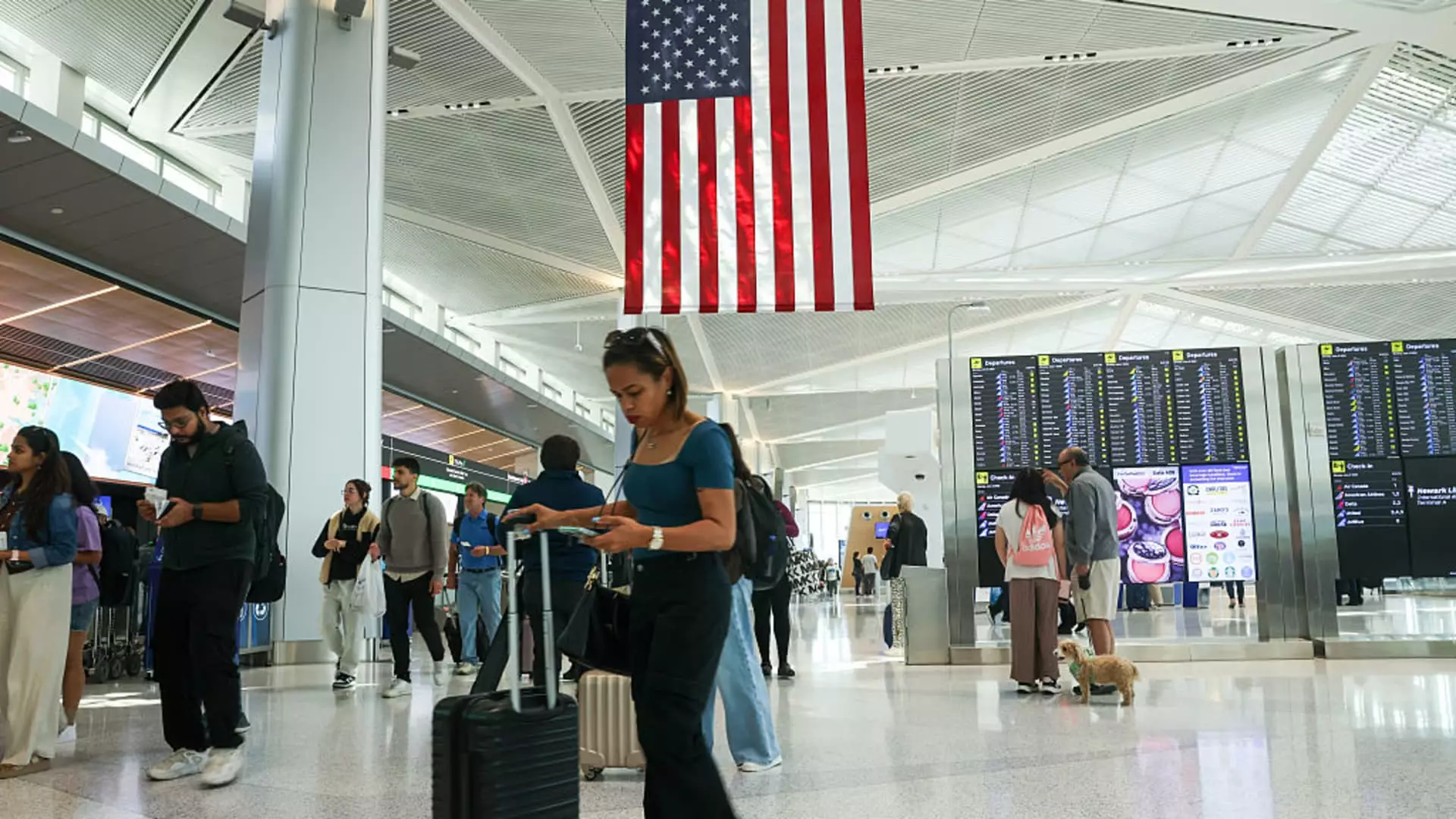Despite the appearances of a bustling summer travel season, the airline industry is fundamentally failing to regain its footing. The widespread expectation that millions will fly over the July 4 holiday masks deeper issues lurking beneath the surface—a systemic imbalance between supply and demand that threatens long-term stability. Airlines have been forced into a frantic scramble, slashing prices and cutting routes in an attempt to manage excess capacity amid a stagnating economic climate. This isn’t just a gentle correction; it is a clear sign that the industry’s veneer of resilience is fragile and built on fragile, short-lived optimism.
Airfares, once a symbol of economic vitality, are now pointing toward oversupply and desperation. The fact that domestic round-trip flights are averaging just $265—down 3% from last year—should be a wake-up call rather than a reason to celebrate. When fares dip below production costs or marginal profit thresholds, it signals a fundamental mismatch between airline capacity and consumer willingness to pay. This pattern of discounting is not sustainable, nor does it herald a genuine rebound, but rather a temporary band-aid over a deeper malaise in the industry. The notion that summer is “on sale” becomes increasingly hollow when it presages a future where profitable routes shrink and airlines are forced into a zero-sum game of survival.
Economic Uncertainty Erodes Confidence
The broader economic environment only compounds these issues. The optimistic forecasts that once projected a steady recovery are now replaced by cautious, sometimes resigned, outlooks. Major carriers like Delta, American, and Alaska have all reduced their forecasts for 2025, citing unpredictable tariffs, foreign travel restrictions, and a lack of overseas visitors. It’s a pattern of misjudgment—perpetuated by overconfidence and misaligned assumptions—that reveals a critical flaw in how airlines gauge demand and plan capacity.
More troubling is the worrisome decline in business travel, which traditionally sustains airlines during the off-peak months and contributes a significant portion of profit. Despite strong employment data that defies expectations, airline demand remains tepid. The industry’s reliance on the reopening of international borders and business travel as growth engines appears misplaced, as these sources have failed to materialize in the hoped-for quantities. The result is a landscape where airlines continue to operate at the edge of profitability, desperately cutting unprofitable flights on off-peak days to eke out some semblance of fiscal stability.
Consumer Behavior and the Future of Air Travel
Looking at consumer spending data, the decline in air travel expenditures—down nearly 12% in June from the previous year—signifies an important shift. Travelers are increasingly reluctant or unable to spend on air travel, and airlines have little choice but to respond by lowering fares further, thereby triggering a vicious downward spiral. This decline isn’t just a blip but reflects changing priorities in a sluggish economy, inflation pressures, and possibly an erosion of the cultural importance of travel that once buoyed airline revenues.
On the international front, the story isn’t much brighter. Although international trips from the U.S. have increased slightly, fares to destinations like Europe and Asia are down significantly—by nearly $100 and 13%, respectively—paralleling the domestic trend of discounting and reduced demand. This international airfare adjustment suggests that global travel, often considered a bright spot for airlines, is also succumbing to the same economic forces constraining growth. Airlines, in their shortsighted pursuit of short-term revenue, have become victims of their own discounting strategies—undermining their long-term profitability and market stability.
The airline industry’s current turmoil reveals a perilous disconnect between its overambitious capacity expansions and the sluggish demand that fails to match supply. It’s an industry seduced by short-term gains, ignoring the underlying vulnerabilities that threaten to unravel its fragile recovery. When fares are at their lowest in years and capacity cuts threaten to erode service quality, one must ask: is this a sign of resilience or reckless shortsightedness?
The crisis isn’t just about economic fluctuations; it’s about systemic flaws, managerial miscalculations, and a stubborn refusal to adapt to shifting consumer behaviors. The industry is at a crossroads—either it will reimagine its operations with a focus on sustainability and demand-driven growth or continue down a path of reckless discounting that risks obliterating profitability altogether. It’s time to confront the hard truths: this isn’t a cyclical downturn but a wake-up call demanding fundamental reform.


Leave a Reply